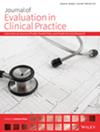Interprofessional Learning and Improving at the Paediatric Ward: A Participatory Action Research Practising Safety-II Theory
Abstract
Rationale
In the complex setting of hospitals, professionals often lack time to improve patient safety. Safety-II theory advocates integrating safety improvement, patient participation, and interprofessional learning and proposes learning frequently from practice variability.
Aims and Objectives
The aim of the research was to understand how interprofessional workplace teams can learn and improve daily from practice variability.
Method
Participatory action research (PAR) was conducted at a Dutch educational hospital paediatric ward to improve situational awareness in bedside ward-rounds. Methods included 115 semi-structured interviews and participant observations of the interactions. The action research team consisted of a representation of all stakeholders and the first author, who introduced Safety-II concepts to reflect on their practice.
Results
The exchange of perspectives between parents, nurses and physicians increased awareness of mutual expectations and experiences prompting individual learning. To foster collective learning at the ward, the research team introduced standards tailored to participants' concerns and stimulated everyday interactions about the ward-round. This approach facilitated daily mutual perspective taking, expectation alignment, and recognition of practice variability, thereby enhancing unit-wide learning and improvement. While aiming at increasing shared situational awareness, multiple improvements emerged simultaneously and unexpectedly including time management, professional pride and job satisfaction. However, participants also discovered that lessons learned did not automatically spread to newcomers.
Conclusion
Everyday learning in hospital units can be enhanced through daily interprofessional interactions about expectations and supported by procedural standards. Fostering daily interactions and initiating standards that met participants' concerns required the research team to spend considerable time addressing conflicting priorities. PAR proved to be a valuable and adaptive approach for learning, improving and engaging all stakeholders in a complex setting.

 求助内容:
求助内容: 应助结果提醒方式:
应助结果提醒方式:


